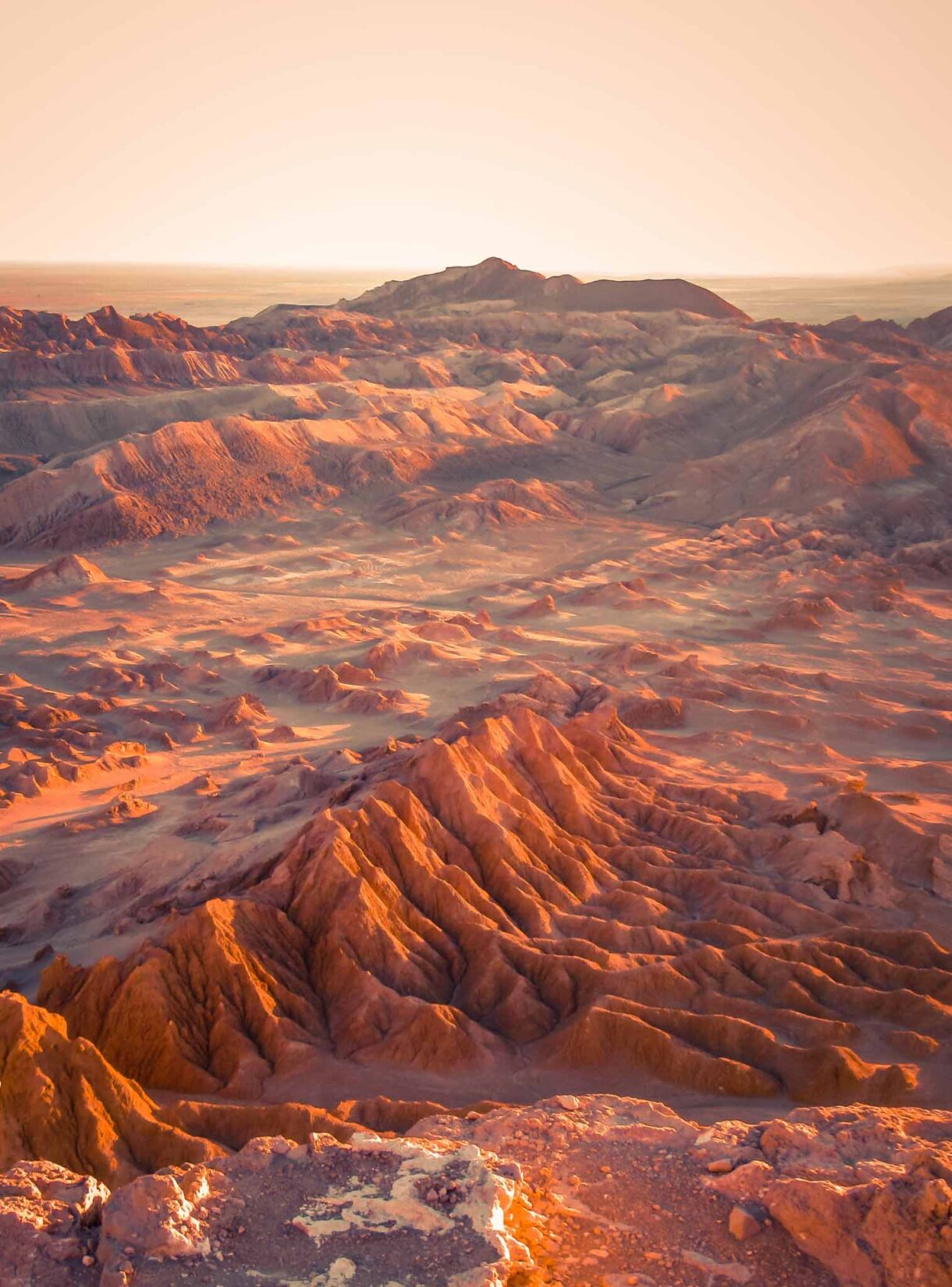
San Pedro de Atacama: the ultimate guide to the world’s oldest desert
Welcome to San Pedro de Atacama, a small desert town located in northern Chile, known for its stunning landscapes, ancient cultures, and outdoor adventures. There’s a myth that the high mineral levels in the Atacama make people happy, spreading good energy and positive vibes. Whether that’s true or not, the Atacama region of Chile has such a great atmosphere and we really enjoyed our time here.
If you’re planning a trip to San Pedro, there are plenty of things to do and see, from hiking to hot springs to stargazing. In this blog post, we’ll highlight some of the best activities and sights in the area, as well as provide information on how to get there and the cost of each activity.
Jump to:
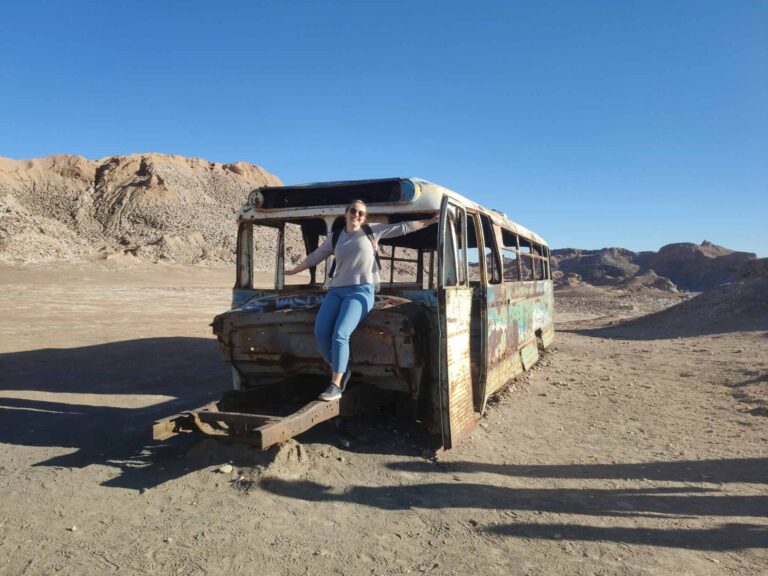
La Valle de la Luna (Moon Valley) tour
Where is San Pedro de Atacama?
San Pedro de Atacama itself is a small, chilled-out tourist town in the north of Chile. The town itself built on an oasis in the middle of the Atacama desert. It’s bursting with cute cafes, colourful souvenir shops, and tour companies. We think it’s the best place to base yourself if you want to explore the Atacama region!
What is there to do in San Pedro de Atacama?
#1 VALLE DE LA LUNA (MOON VALLEY)
Valle de la Luna, or Moon Valley, is one of the most popular attractions in San Pedro, and for good reason. This otherworldly landscape features unique rock formations, salt flats, and sand dunes that are reminiscent of the moon’s surface. The orange rocks against a blue sky are absolutely stunning at sunset.
How to get there: Most people choose to take a tour of Valle de la Luna. You’ll be driven around all the best sights of the desert, and end your trip with drinks and snacks. Cheers to that!
Cost: Tours cost £15-£30 GBP ($20-$35 USD) per person. You can also rent a bike and ride there yourself (~£8 GBP/$10 USD per day).
#2 LAGUNA CEJAR (CEJAR LAGOON)
Laguna Cejar is a beautiful saltwater lagoon that’s perfect for swimming and floating. The lagoon’s high salt content makes it easy to float on the surface, and the surrounding scenery is breathtaking. Be warned though, although the temperature is warm, the lagoon certainly isn’t!
How to get there: Again, the easiest way to get to Laguna Cejar is on a tour. You could also hire a car and drive yourself, but this is unlikely to work out cheaper.
Cost: Tours cost £25 GBP ($30 USD) per person. Shop around a bit to get the best price!
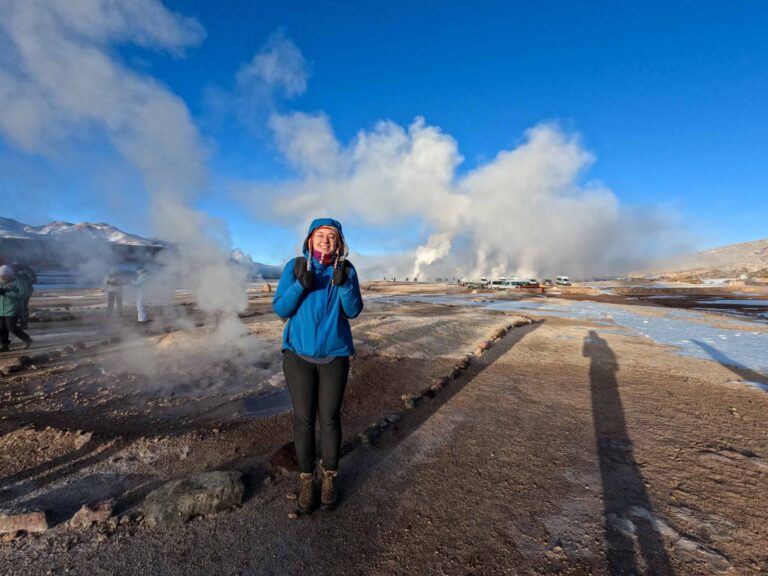
El Tatio Geysers: the coldest I’ve ever been (-17°C)
#3 GEYSERS DEL TATIO (EL TATIO GEYSERS)
The El Tatio Geysers are a must-see for anyone visiting San Pedro de Atacama. At an altitude of 4’300 metres, these geysers are one of the most original (and in my opinion, coolest) things to see in the Atacama
Top tip: At 4320 metres (14,170 ft) altitude before sunrise, it’s absolutely freezing! Wear ALL your clothes. I’m not being dramatic when I say that this was the coldest I’ve ever been! It was -17°C (1.4°F)!
How to get there: To get to the Geysers del Tatio, you have to take a tour. The geysers are most active in the early morning, so you’ll likely set off very early. It’s ~2 hours on some very windy roads but the views are insane.
Most tours will get you to the geysers right on time for sunrise when they are at their most active. After visiting the geysers, our van pulled over away from the crowds for breakfast with a view! We feasted on hot cocoa, bread, cheese and avocado. On the way down, we stopped off at a couple of viewpoints to see flamingos and other wildlife. Even though a lot of tour companies offer this trip, it still felt like a really special and personal experience, which I loved.
Cost: We paid around £40 GBP ($50 USD) per person, which was organised through our hostel!
#4 TERMAS DE PURITANA (PURITANA HOT SPRINGS)
After a few days of sightseeing, there’s nothing better than taking it easy. Soaking in the natural hot springs at Termas de Puritama is the perfect way to relax. The pools are located in a beautiful canyon and are surrounded by lush vegetation and mountain views. Temperatures are between 28°C and 31°C (82°F to 88°F) – not boiling, but comfortable!
How to get there: The hot springs are only 60 miles (100 km) out of San Pedro town via Route B-245. However, there’s no public transport in the region. Tours are easily organised in San Pedro town, or by your hostel. If you’re renting a car you could also drive there yourself.
Cost: Tours cost ~£30 GBP ($35 USD) per person. Tickets to the hot springs might cost extra, depending on what time of day you visit.
#5 STARGAZING TOURS
San Pedro de Atacama is one of the best places in the world for stargazing, thanks to its high altitude, clear skies, and lack of light pollution. There are several stargazing tours available, which typically include transportation, a knowledgeable guide, drinks, snacks, and the use of telescopes.
Top tip: Organise your stargazing tour during a new or small moon. A full moon is so bright that you won’t be able to see as many stars! And wrap up warm, the desert cools down a lot as it gets darker.
How to get there: You really need a tour for this one. Your tour company will drive you out to the spots with the darkest skies. They’ll also bring and set up telescopes, and understand how to use them so that you can get the most out of your experience. Tours leave at approximately 8pm from San Pedro de Atacama town and come back at about 11pm.
Cost: Tours start at £40 GBP ($50 USD) per person
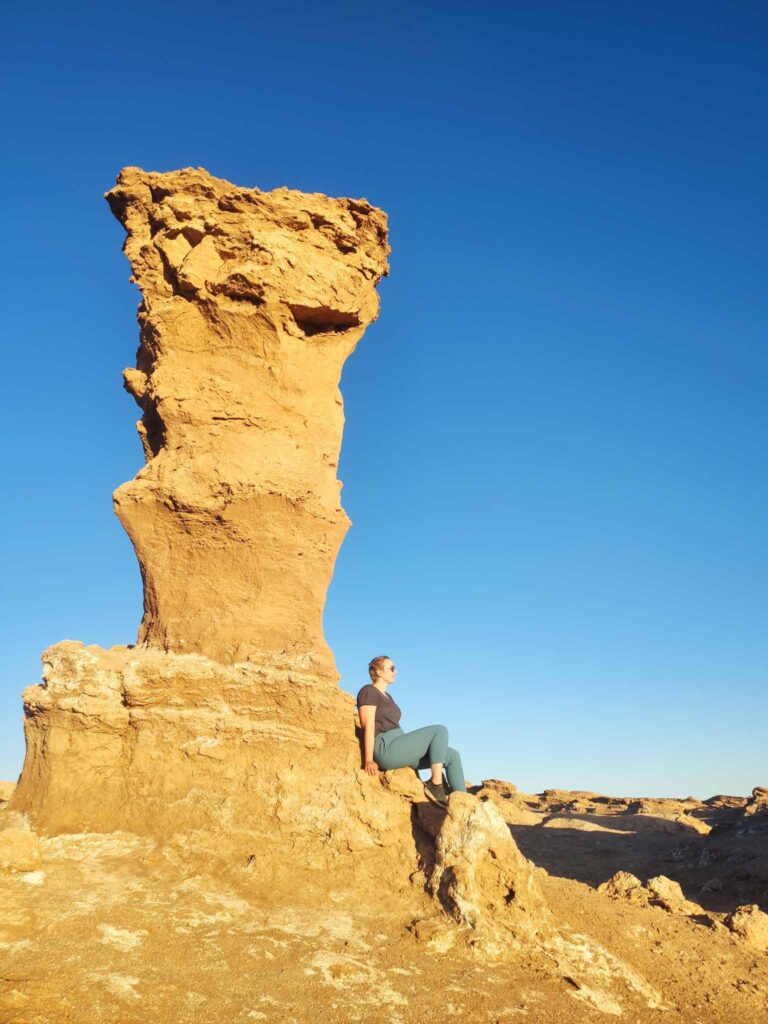
Golden hour in the desert
Do I have to take a tour in San Pedro de Atacama?
You’ll see we’ve mentioned tours a lot in this post. Much more than we usually would.
We aren’t huge fans of organised travel as we prefer to see things at our own pace and away from the crowds. But sometimes, when tours are the ONLY way to see something, you have no choice but to join the masses.
Unfortunately there’s no public transport around San Pedro de Atacama. You can get a bus in and out of the town. But to get between San Pedro de Atacama and the best sights, you’ll need to go with a tour company (or hire your own car).
And the worst bit? You’ll often have to pay entry fees on top once you get there, which, depending on the attraction, can be anywhere up to £15 GBP / $23USD per person.
Budget travel tip: Choose your tours carefully to save money. Ask yourself what a ‘must-do’ is, and what would be ‘nice-to-do’. If you’re travelling through Bolivia on a Uyuni tour, you’ll see epic geysers and bathe in hot springs on your way to San Pedro de Atacama. You could consider skipping El Tatio Geysers and Puritama Hot Springs in favour of other trips, like La Valle de la Luna.
When’s the best time to visit San Pedro de Atacama?
We’re firm believers that there’s no ‘best time’ to visit a destination. All seasons are beautiful and bring something a little unique and special that makes no two adventures the same.
San Pedro de Atacama has pretty consistent weather year-round. It’s a little hotter in the summer (December to March) and a little cooler in the winter (June to October). No matter when you visit, you can expect warm, sunny days, with the temperature plummeting at night.
Outdoor activities, such as hiking, stargazing, and visiting the many natural wonders in the area, are available year-round too. If you’d like to try stargazing, we recommend visiting during a new-moon, as the sky will be much darker.
If you’re looking for something unique, you could visit in the rainy season (December to February). When the rains come, the desert flowers bloom, flooding the dry, orange landscape in a sea of pink and purple flowers. This phenomenon is rare and incredibly beautiful, but maybe you’ll get lucky?
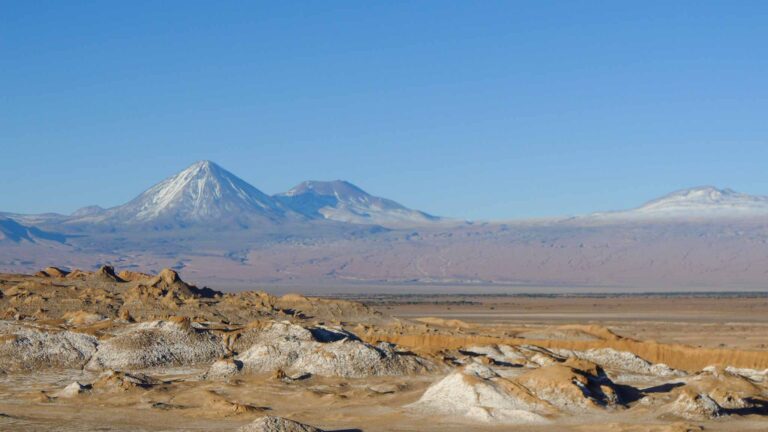
Licancabur Volcano, which straddles the Chile-Bolivia border
How to get to San Pedro de Atacama
So, you’re sold on a trip to San Pedro? Here’s how to get there by air and overland
HOW TO GET TO SAN PEDRO DE ATACAMA BY AIR
We usually suggest overland travel in South America (and worldwide, in general). It’s far more sustainable and you often get to have unique and special experiences you’d otherwise miss out on.
But distances in Chile shouldn’t be underestimated. Unless you’re on an extended South America trip, flying directly to San Pedro de Atacama from Santiago is usually the most time-effective option
FLY FROM SANTIAGO TO CALAMA
Travel Time: 3 hours
Frequency: Several times daily. Calama is an industrial city and many locals travel by air between Calama and the capital.
Cost: Between $49,000 CLP (£50 GBP, $60 USD) and $180,000 CLP (£180 GBP, $220 USD) each way. As usual, book early to secure the cheapest fares.
Onward Travel: From Calama airport, you can take a shared or private transfer to San Pedro de Atacama. A shared transfer costs around £8-£12 GBP ($10-$15 USD per person, while a private transfer can cost upwards of £50 GBP ($60 USD) depending on the number of passengers.
HOW TO GET TO SAN PEDRO DE ATACAMA OVERLAND
OVERLAND FROM SANTIAGO
Travel Time: ~22 hours
If you prefer to travel by land, you can take a bus from Santiago to San Pedro.
Frequency: Several times daily from Santiago
Cost: The cost of a one-way ticket can vary between £25-£60 GBP ($30-$80 USD) depending on the bus company and the class of service.
Onward Travel: From Calama, you can take a shared or private transfer to San Pedro de Atacama, as mentioned earlier.
OVERLAND FROM BOLIVIA
If you’re on a longer trip in South America, and you’re already in Bolivia, you can get to San Pedro de Atacama overland. A Salar de Uyuni tour is the most popular (and easiest) way to do this.
This trip is seriously awesome, and such a budget-friendly option (compared to the day trips in San Pedro de Atacama!). We really recommend it. You can find out more about the Salar de Uyuni tour from San Pedro here.
Travel Time: 3 days
Frequency: Daily from Uyuni
Cost: Our 4-day round trip Salar de Uyuni tour, which started and finished in San Pedro de Atacama, cost around £150 GBP ($180 USD)
It’s worth noting that the border crossing between Bolivia and Chile can be time-consuming. The opening hours don’t run to any fixed schedule, so you might have to wait for a border guard to show up. If you need to get a visa on arrival, that’ll take some time too.
The route reaches around 4,910m (16100 feet) in altitude and in the winter the snowy weather can lead to road closures. When we were crossing into Bolivia, the border guards had actually gotten stuck in the snow! We had to give them a lift!
There are no public buses that do this route for those that don’t want to take a tour. However, you might be able to arrange a one-way ride with a tour guide heading from Uyuni. Their vehicle will likely be empty as they drive to the Chilean border to pick up a new group – many will be happy to drop you off at the border for a small fee.
OVERLAND FROM ARGENTINA
You can also get to San Pedro de Atacama from Salta, Argentina by bus. This is a great way to see the stunning moon-like landscapes of northern Argentina and Chile.
Travel Time: ~10.5 hours
Cost: The journey costs upwards of £60 ($70 USD)
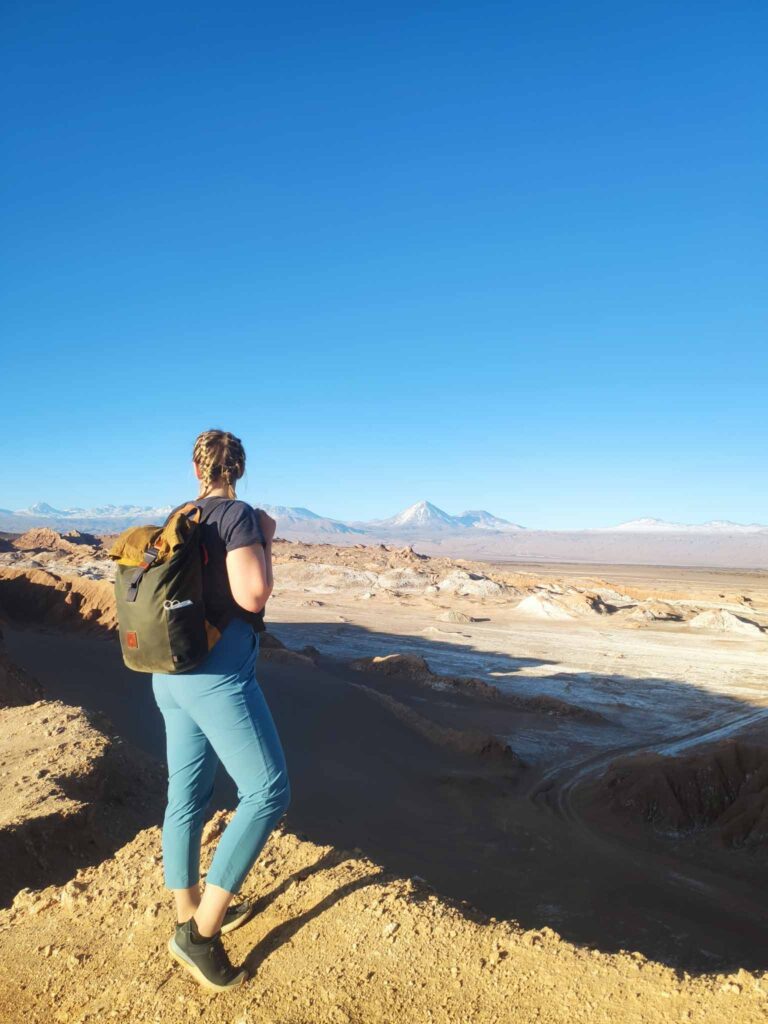
Views all the way to Bolivia form La Valle de la Luna
Where to stay in San Pedro de Atacama
San Pedro is a tourist oasis, and there’s no shortage of places to stay. From cute and quirky hostels, to something a little more upmarket, you’re bound to find something to suit your budget and travel style
We stayed in Hostel Mamma Tierra! The name translates to Hostel Mother Earth, which is is definitely the kind of vibe that we like! We took a small double room, which was reasonably priced and really cute. There were hammocks to relax in, and the team even made pancakes for breakfast (or sent us off with a pack-up breakfast if we had an early tour) which were delicious! If you’d like options, we also heard good things about Casa Voyage from another traveller
If you’re looking for something a bit more luxurious, we’ve heard good things about Hotel La Casa de Don Tomás and Terrantai Lodge. Both of these are taking extra steps towards sustainability, which is another reason to consider them.
FAQs
Q: WHAT TO DO IN SAN PEDRO DE ATACAMA?
A: We hope we’ve covered that above! Scroll back up and have a read, and feel free to reach out if you’d like any more ideas or information.
Q: IS THE ATACAMA DESERT WORTH VISITING?
A: Yes, the Atacama Desert is definitely worth visiting! It’s unique and crazy beautiful. It caters to tourists, so you’ll be able to meet other travellers. It’s also much cheaper than visiting other regions of Chile (such as Patagonia!)
Q: WHAT TO PACK FOR SAN PEDRO DE ATACAMA?
A: San Pedro is warm during the day but temperatures can plummet at night. Layers are key, you might be wearing shorts during the day but you’ll want long trousers and a jumper at night. We’ve written a full guide to what to pack for each region of Chile here if you’d like more detail.
Q: IS THE ATACAMA DESERT SAFE?
A: Yes, the Atacama Desert and San Pedro itself are generally safe for travellers. The region is well-developed for tourism, and there are many reputable tour companies that offer a variety of excursions and activities in the area. San Pedro is also a really small town, that mostly caters to tourists, which means there’s always someone around. We didn’t feel unsafe here at all (especially compared to Santiago/Valparaiso).
Q: WHAT IS THE ELEVATION OF SAN PEDRO DE ATACAMA?
A: San Pedro de Atacama is situated at an elevation of around 2,400 meters (7,900 feet) above sea level. If you’re coming from lower altitude (Santiago, Patagonia) it’s a good idea to spend a few days in San Pedro before travelling to higher altitudes, such as El Tatio Geysers or a Salar de Uyuni tour.
Q: CAN YOU DRINK TAP WATER IN SAN PEDRO DE ATACAMA?
A: It’s not recommended to drink the tap water in San Pedro de Atacama. The tap water has a high mineral content and can cause stomach upset. Many hotels and restaurants in San Pedro de Atacama offer purified water. Or just get a travel filter bottle and you’ll be able to safely drink any non-salty water.
Q: WHAT'S THE VOLCANO NEAR SAN PEDRO DE ATACAMA?
A: San Pedro de Atacama forms the northern chain of Chile’s ‘Ring of Fire’ and is surrounded by volcanoes. Some of the most popular ones include; Lascar Volcano (active, 70km away, 5,592m high); Licancabur Volcano (dormant, on the Chile-Bolivia border, 5,916m high); Tatio Volcano (extinct, 80km away, 5,704m high) and Sairecabur Volcano: (dormant, on the Chile-Bolivia border, 5,971m high). If you’re feeling up to it, you can even climb some of these for stunning views, but it’s important to go with a reputable company and be wary of altitude sickness.
Follow our daily adventures on Facebook and Instagram
Disclaimer: The information and advice provided in this blog are the author’s opinions and based on their personal experiences. All information was accurate at the time of writing. However, things can change quickly, so always double-check current conditions and guidelines before setting out. Remember, your travels and safety are your own responsibility, and this blog can not be held responsible for anything that might happen on your adventures! Always exercise caution and good judgment. Oh, and don’t forget to get travel insurance! Happy travels!
This post may contain affiliate links (yay for transparency!) This means that I will earn a small commission, at no additional cost to you, if you click the link and choose to buy the product. I only link to stuff I have personally bought and found useful and never endorse crap. Your support helps keep the site going, thank you!
Alice
Alice is a UK travel blogger who advocates sustainable travel and being more eco-conscious on a budget. She loves coffee, her houseplants and summiting mountains.
You May Also Like
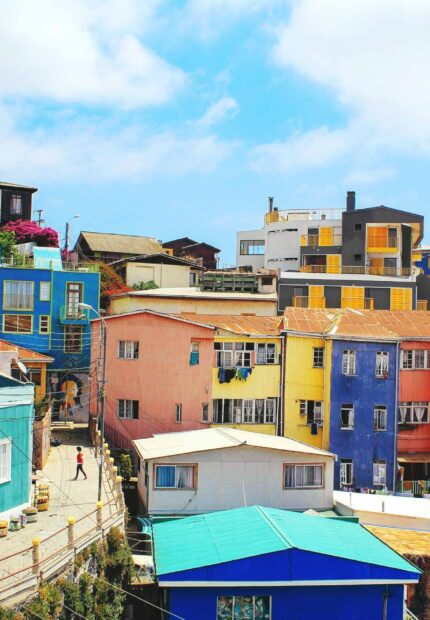
What do things cost in Chile?
May 20, 2023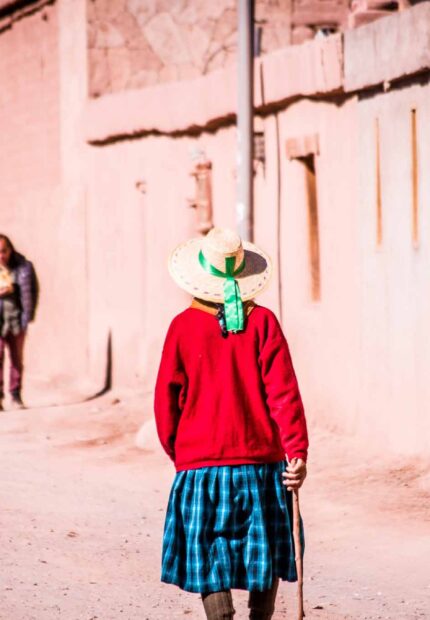
15 amazing things to do in Pucón, Chile for every budget
May 6, 2023
2 Comments
Andrea Mackay
As two people in their third age (60s), we found the information that Alice shared about San Pedro de Atacama really useful and interesting, and we’re also grateful for the links the blog gave to Travelling in Bolivia and the Toro-toro National Park. We are planning to stay in Cochabamba for a bit, so will definitely go and visit it Thsnk you!
Alice
I’m glad you found it useful, hope you both enjoy your travels!